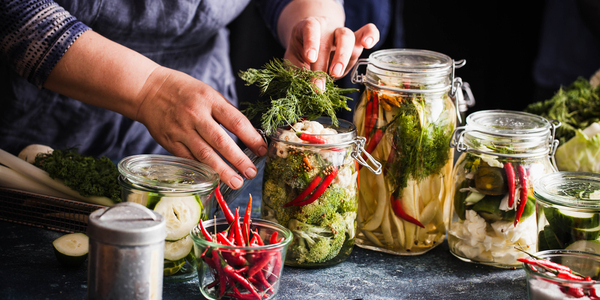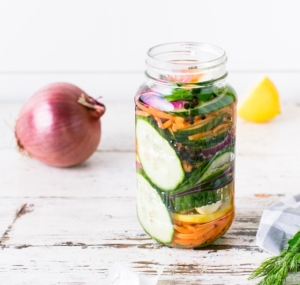Home Canning: So Much More Than Preserving Food

Home canning is a great way to preserve excess produce. However, there are many benefits to canning, beyond taming your garden’s bounty of cucumbers and zucchini.
A little canning history
For centuries, people have looked for ways to preserve their food (including fermentation). The first record of canning comes via the battlefield.
In the 1700s, as Napoleon Bonapart led his armies across Europe, feeding his troops became a challenge. Soldiers traveling over the continent carried food supplies with them, but the food would spoil.
Desperate to find a solution, the French government offered a prize to anyone who could find a way to preserve food and make it easy to transport.
Nicolas Appert, a distiller, confectioner and chef, took up the challenge. He experimented with preserving soups, dairy, jams and syrups.
After approximately fourteen years, he perfected what we know of today as canning. He collected his prize money and wrote a best-selling book called The Art Of Preserving All Kinds Of Animal And Vegetable Substances For Several Years (1811).
Why can foods in 2019?
More than two hundred years later, canning is still a popular way to preserve food. Whether you refer to it as canning, bottling, preserving or putting up, there are many benefits to storing food for another day.
1) Create food tailored to your taste
Mass-produced canned food is easy to find in any supermarket. However, commercially canned products often include additional ingredients that can detract from the food’s natural flavors (e.g., sugar, salt and preservatives).
By canning your food, you’re able to customize the recipes to your taste. That might include adding herbs to vegetables or combining fruits and spices in new ways—such as berry jam with a hint of habanero chili.
Who knows, maybe you’ll come up with a new flavor profile that’s a hit!
For additional information, including safety tips and recipes, visit the National Center for Home Food Preservation.
2) Make home canning a celebration
Canning does not have to be a solitary activity! You can turn your canning into an annual (or seasonal) event to share with family and friends. The possibilities are endless.
- Have a co-op canning party. Combine all your fruits and vegetables and spend time together putting up peaches and pickles.
- Invite your grandkids over for a canning day of their favorite foods.
- Throw a themed canning event based on a favorite recipe or type of produce.
3) Save money
Canning at home can reduce the expense of buying store-bought food. For added savings, you can save money on the foods you want to can. Harvesting food from your or your friends’ gardens is the most economical way to can.
However, if you need to buy additional goods to bottle, shopping for discounted, end-of-season produce or buying fruits and vegetables in bulk are good options.
Also, food-rescue companies (e.g., Imperfect Foods and Misfits Market) sell and deliver produce that does not qualify for commercial sale. The fruit and vegetables could be misshapen, too big or too small—but still fresh. Prices are generally 30 to 40 percent less than in supermarkets, making it a cost-effective option for canning.
Enjoying home canning beyond preserving food
In addition to the social and economic benefits of canning, there’s great satisfaction in making something yourself. For months to come, you can enjoy colorful jars of food—every time you open the cupboard. Moreover, you’ll have a lovely supply of preserved food and memories.
We’d love to hear your canning stories! Do you have special canning memories, recipes or traditions? Pop over to our Facebook page and share your expertise and stories!
Image #2 credit: Kim Daniels


